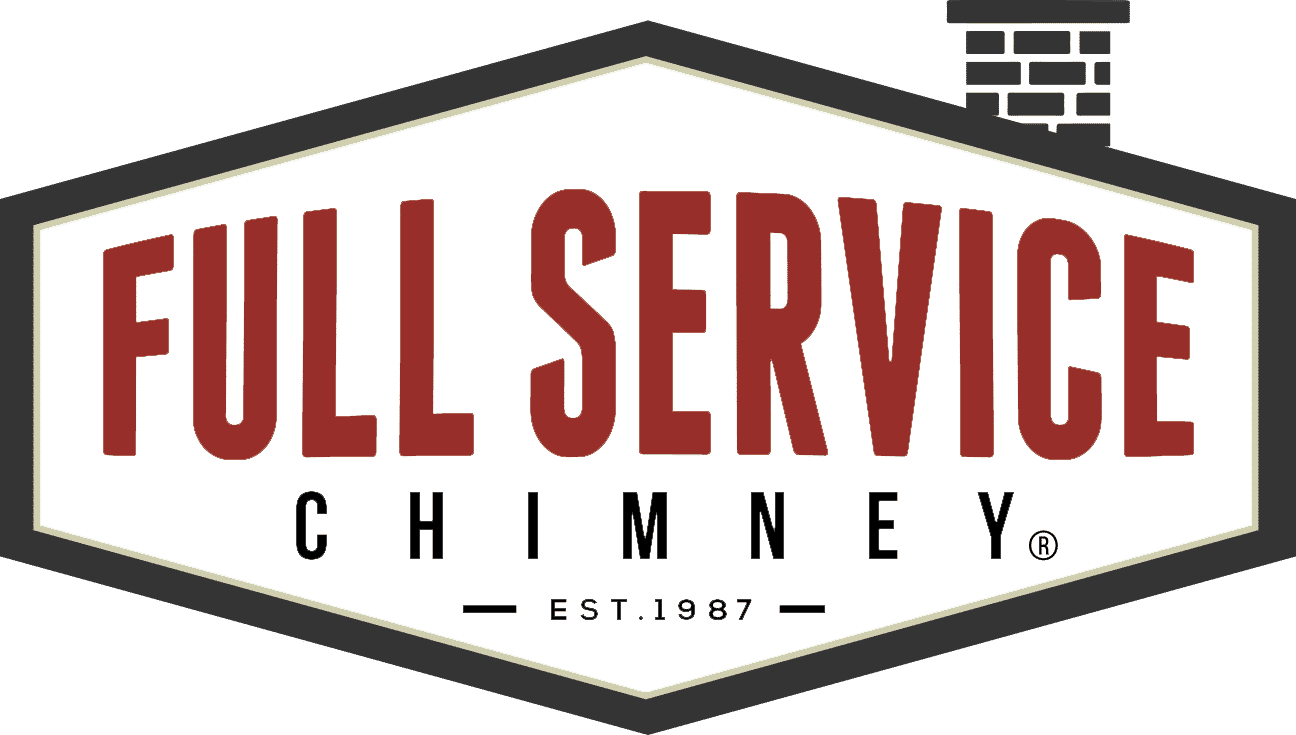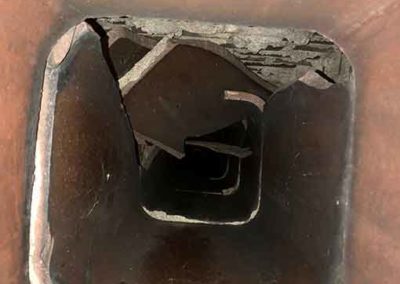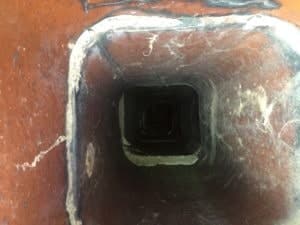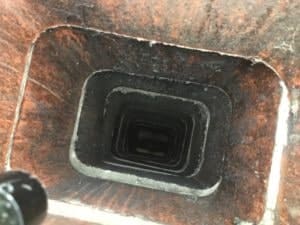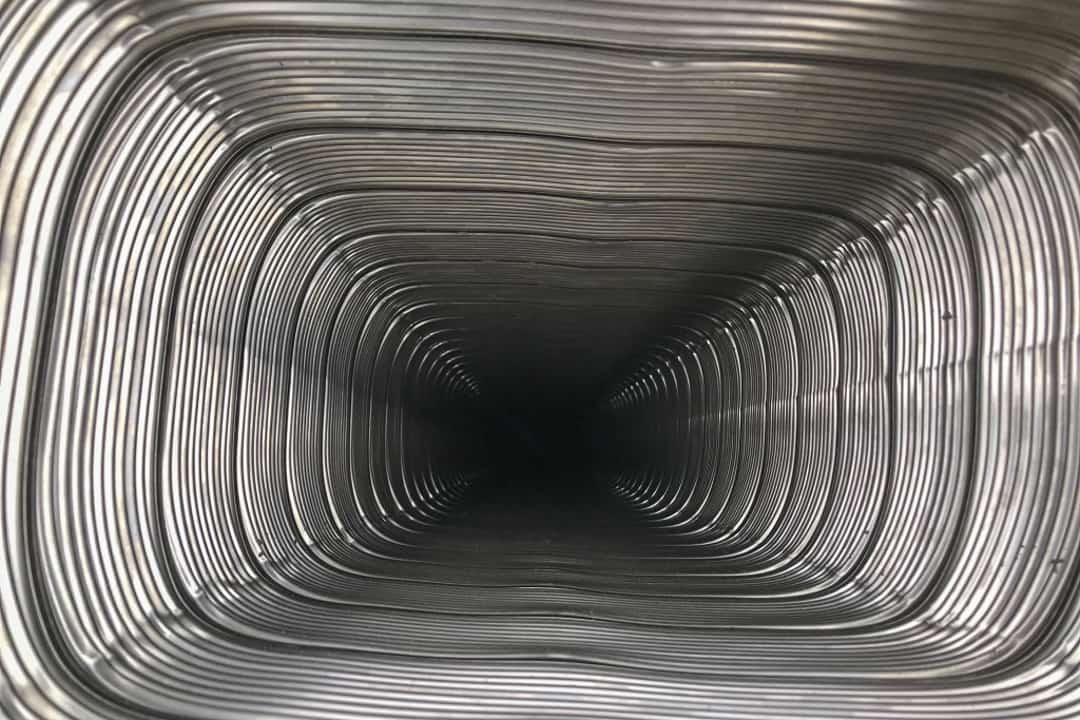Chimney Liners
Your Trusted Repair Specialist Since 1987
Schedule an Appointment Today!
Common Liner Problems
Chimney Liners run into a host of problems but all of which can be avoided. This page serves to explain the how and why of liner systems both old and new designs to help you make the right decisions when considering flue relining projects for your home.
Read on to learn more about common problems with chimney liners and why relining a flue with a steel liner is critical for your home’s safety.
1. Unlined Chimneys Can Cause House Fires or Carbon Monoxide Poisoning
Unlined brick chimneys do not draft well and allow heat loss to the adjacent home. An early chimney design allowed a fire risk that is now considered unsafe as it is absent chimney safety considerations. Unlined fireplace chimneys will draft poorly because, without a chimney flue liner, exhaust and creosote quickly cools, and the smoke cannot develop a strong draft or flow.
Around 1900, flue tiles in chimney construction became available to home builders. However, their use did not become a mainstream standard in Kansas City construction until after WWII. At the time, these flue tiles were state of the art chimney designs and were heralded as a life saver. Since flue liners help “keep fire in its place” fewer homes suffered loss to fire. Another great side effect was reducing carbon monoxide poisoning (from faulty flues allowing toxic fumes into the home).
2. Cracks and Gaps in Clay Liners Lose Effectiveness
Clay Chimney liners are going on 100 years old in the Kansas City Metro, and as such, they have lost much of their effectiveness in keeping lives and property safe. Gaps in the mortar joints and cracks in the flue tiles usually start about 15 years after construction. If the chimney did not benefit from a cap early on, then small cracks will be seen much sooner due to rain erosion.
Stainless steel liners have a greater tolerance to thermal expansion. Which protects the home from issues with old clay tiles. In the past, if a flue fire occurred in the fireplace chimneys clay liner, then it would destroy the tiles and brickwork, allowing the chimney fire to reach through the chimney wall, leading to a home fire.
3. Faulty Liner Allows Fire Exhaust to Cause Damage to Mortar and Brick Work
A chimney’s liner not only protect your home, but also protects the mortar and brick work of the structure as well. Exhaust from wood and gas fires are very acidic. The lime in mortar and the clay in bricks reacts with the acid and begins to fall apart. The damage from chimney flue exhaust is so active that our chimney sweeps can look at some gas chimney flues from the outside and tell where the flue liners are just by the visible damage showing through the outer brick chimney.
Find out what’s wrong with your chimney with the Chimney Detective Tool!
Trust Your Local Chimney Liner Experts
Full Service Chimney sweeps have repaired and replaced tens of thousands of Stainless Steel Liners in the Kansas City area.
We can help you too!
Does Your Chimney Need a Liner?
The National Safety Board conducted a test on unlined chimneys and discovered that the heat from the fire and smoke could ignite the home’s combustibles in as little as 3 1/2 hours.
Yes, a functioning chimney flue liner (or as often referred to as a fireplace flue liner) is necessary because keeping the home safe and protecting the chimney are crucial to most homeowners. Trust your Full Service Chimney Inspector to evaluate your chimney or fireplaces liner and suggest flue repair if necessary.
How Much Does it Cost to Have a Chimney Relined?
Chimney Relining typically costs between $3,500.00 – $5,500 but could vary (higher or lower) depending on each home chimney and fireplace system’s unique circumstances. A lifetime warranty often covers stainless steel liners.
The price to have a chimney relined is determined by various factors:
- The diameter and length of the chimney liner kit
- Whether the liner serves a wood/gas fireplace or a furnace flue
- If the original fireplace liner needs to be removed to allow room for a steel liner with insulation
- Necessary scaffolding
- Demolition may be needed to accomplish the repairs safely
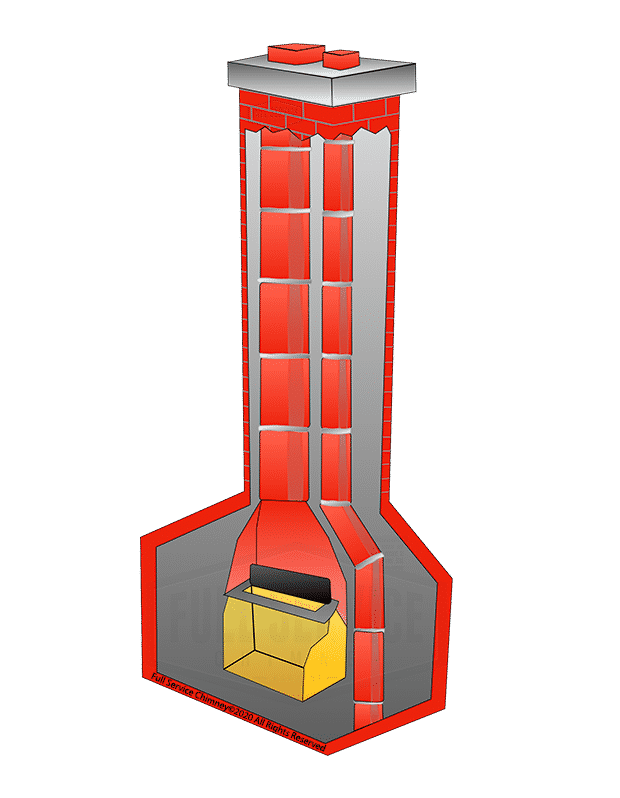
Solutions that Last
A long-lasting repair for older masonry chimneys is a complete Stainless Steel Chimney Liner System.
When installed properly with insulation, stainless steel chimney liners protect from the corrosive acids found in gas and wood-burning fireplaces. They can even tolerate minor fires without the dangerous issue of cracked fireplace flue tiles.
Visit our Locations page to see if you’re in our Service Area?
What Our Customers Say
"Great people who are good at their work but also care about the details that make up the overall experience."
"Polite and professional. Explained in detail what needs to be done. Arrived on time.Pricing is within norms."
"We had a great experience with Full Service Chimney. Scheduling was easy and they showed up on time. We are very pleased with the quality level of their workmanship. Looking forward to our first fire in our new fireplace!"
"We had Full Service Chimney reline the chimney on our 35 year old house and put on a new crown. The initial inspector provided photographic evidence of need for repair. We were very satisfied with the quality of the work and the politeness of the two man crew, Jacob and Ian. Jacob, the lead tech, carefully explained all our questions and took pains to avoid disturbing plantings ..."
"Sam did a great job cleaning our chimney in our new house. He was on time, courteous, and very professional. He recommended a few additional services, but also informed me it would not be unsafe to use the chimney until we had the available funds. If we end up fixing, we will absolutely use Full Service Chimney again."
Your #1 Choice for Steel Chimney Installations
Our Chimney Installers are Certified Pros. Installing Stainless Steel Liners is our specialty and we’ve done it for over 3 decades.
If you’re in the KC Metro area, then let us install your new system today!
